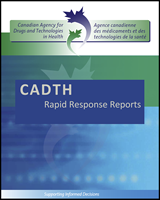In Canada, stroke is the third most common cause of death with an estimated incidence of approximately 50,000 cases each year. The majority of strokes are ischemic (80%) and are a result of interruption of blood flow to the brain caused by a blood clot. Transient Ischemic Attack (TIA) is defined as “a transient episode of neurodysfunction caused by focal brain, spinal cord, or retinal ischemia, without acute infarction”. Approximately 15,000 Canadians experience a TIA each year and are five times more likely to suffer from a stroke in the following two years when compared to the general population. The need for an accurate and timely diagnostic test is therefore needed, as the risk of recurrent stroke within 90 days after a TIA is between 10% to 20%.
The combination of imaging modalities, laboratory tests, and clinical features provide a comprehensive diagnosis for stroke. Advances in imaging technology such as computed tomography (CT) and magnetic resonance imaging (MRI) have allowed for the distinction between hemorrhagic and ischemic strokes, providing clinicians with greater certainty whether to administer thrombolysis. With rapid scan times and ease for detecting intracranial hemorrhage, CT has shown to be a preferred diagnostic technology. MRI has been shown to easily detect ischemia with diffusion-weighted imaging and also detects hyperacute hemorrhage with proper sequences. MRI is not as widely available as CT and is typically more costly.
With no single gold standard for the diagnosis of stroke, uncertainty regarding the appropriateness of solely using CT or expert clinical assessment remains. Furthermore, current clinical practice guidelines state that CT tests must be performed, though this technology is not always available in rural or remote emergency departments. The objective of this review is to summarize recent clinical evidence of CT and expert clinical assessment to support the diagnosis of stroke and TIAs.
Disclaimer: The Rapid Response Service is an information service for those involved in planning and providing health care in Canada. Rapid responses are based on a limited literature search and are not comprehensive, systematic reviews. The intent is to provide a list of sources of the best evidence on the topic that CADTH could identify using all reasonable efforts within the time allowed. Rapid responses should be considered along with other types of information and health care considerations. The information included in this response is not intended to replace professional medical advice, nor should it be construed as a recommendation for or against the use of a particular health technology. Readers are also cautioned that a lack of good quality evidence does not necessarily mean a lack of effectiveness particularly in the case of new and emerging health technologies, for which little information can be found, but which may in future prove to be effective. While CADTH has taken care in the preparation of the report to ensure that its contents are accurate, complete and up to date, CADTH does not make any guarantee to that effect. CADTH is not liable for any loss or damages resulting from use of the information in the report.
Links: This report may contain links to other information available on the websites of third parties on the Internet. CADTH does not have control over the content of such sites. Use of third party sites is governed by the owners’ own terms and conditions.

